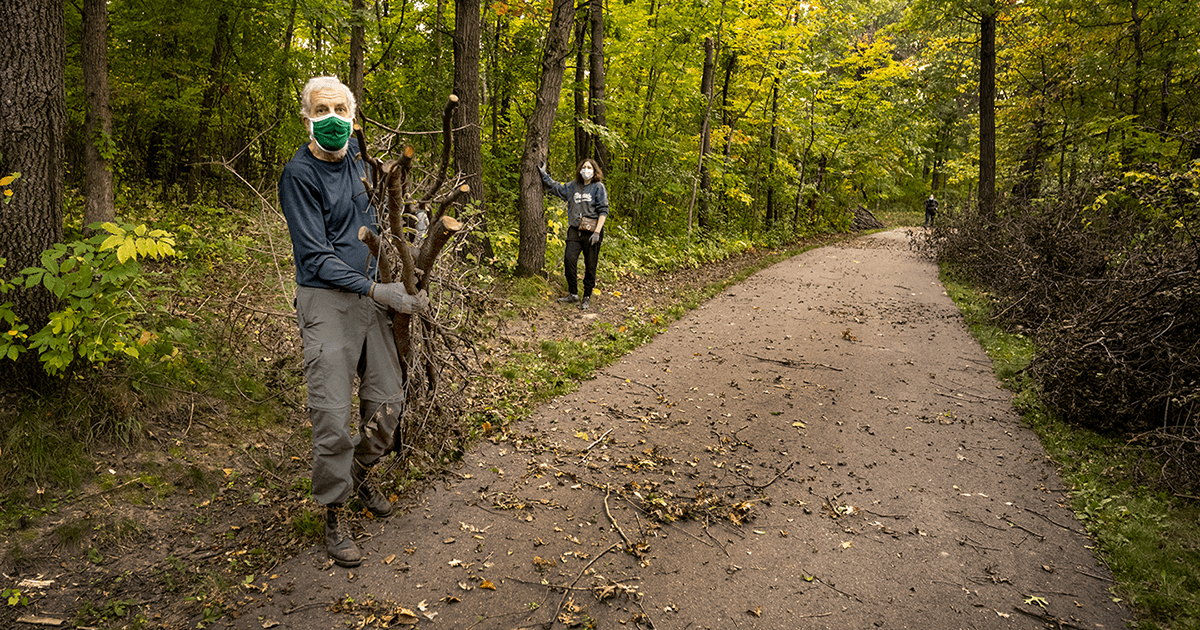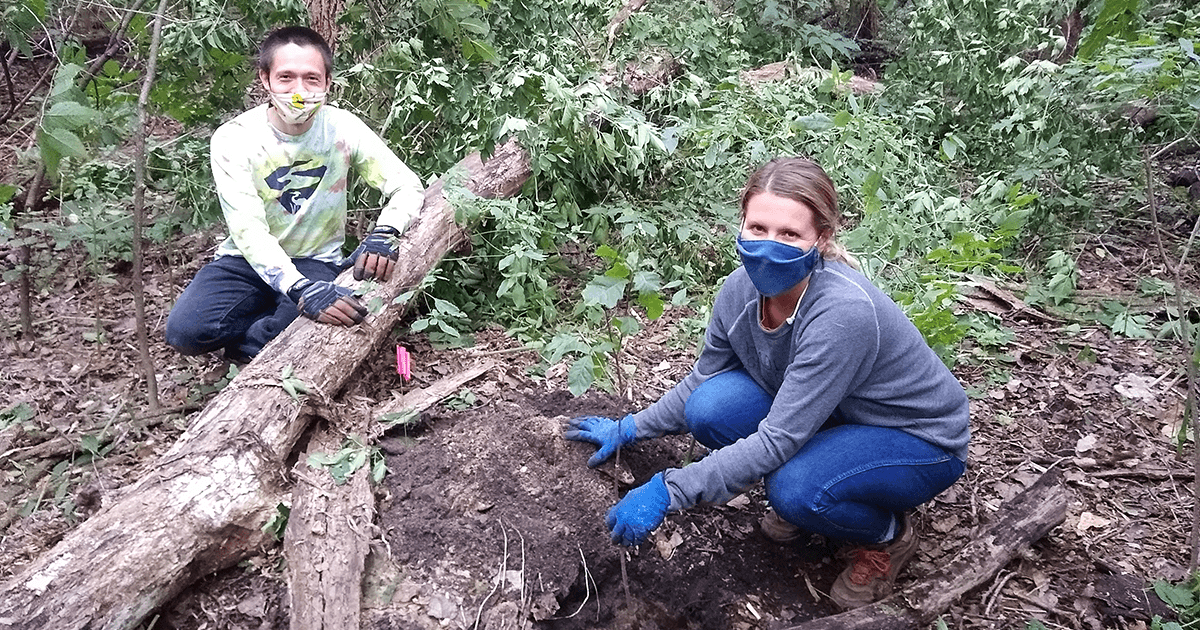FMR ecologist coauthors paper on the importance of replanting after buckthorn removal
When FMR volunteers remove buckthorn, we're making way for native plants to reestablish critical habitat. In a new research paper, following up by planting native plants seems to show another benefit: Buckthorn has a harder time making a comeback.
Invasive plants like buckthorn can harm water quality, native plants and wildlife. Their shallow root systems don't hold soil in place, creating erosion and water quality problems, especially on slopes. Left unchecked, buckthorn can outcompete native plant species, which pushes out the insects, birds and other wildlife that depend on those native plants. Buckthorn even emits a chemical toxic to amphibian embryos.
By reducing buckthorn at a site, we can help the land thrive again, creating vital habitat and cleaner water. But there's more to restoration than just removing invasive species.
Replanting key to restoration success
As our volunteers know, a crucial follow-up step we practice in the process of ecological restoration is to bring back a diverse, place-adapted mix of plants after removing invasive plants. Of course the habitat and water quality benefits are one reason. But those plants actually help keep buckthorn from reestablishing its hold as well.
FMR ecologist Dr. Alex Roth coauthored a retrospective analysis of restoration sites where buckthorn had been removed, some with replanting follow-up and some without. The paper was recently published in the scientific journal Restoration Ecology.
The research team surveyed restoration units at 24 sites in the Twin Cities metro area, including FMR's restoration project at the William H. Houlton Conservation Area, and found that "revegetated units had higher herbaceous cover, lower buckthorn cover, and half the ratio of buckthorn to herbaceous cover compared with unseeded units." It's an important finding for the field of restoration ecology, though their study points our that the methods they used have limits and that there's always more research to be done.
Alex adds, "We've always known that the habitats we restore need help getting back to the levels of diversity present before invasive species took over. If invaders are present at a site long enough, they can not only outcompete the aboveground vegetation but exhaust the native seedbank at a given site, meaning there are essentially no native species left to recolonize after the invasive species is removed."
"Now, we're showing that not only does seeding and planting help some of those native species return, but that by getting native plant cover back, we can help limit the success of new buckthorn seedlings and resprouts."
The more you know...
"As the field of restoration ecology evolves, we're so fortunate to have highly regarded scientists immersed in the research leading our restoration projects," says FMR Conservation Director, Betsy Daub.
There's more to refine in the field of ecology's buckthorn removal practices, and FMR is looking into a few different topics.
For example in 2018, FMR ecologists Karen and Alex began a study at Hampton Woods to look at the long-term effects of three different methods of controlling buckthorn. We're testing four combinations of forestry mowing and herbicide application, then measuring the impact on both buckthorn and native plants in those areas.
Our goal is to maximize buckthorn control while minimizing herbicide use and any negative effects on the native vegetation. While it's still early, we're seeing the best results from a combination of winter forestry mowing followed by fall spot sprays of the buckthorn resprouts.
This treatment gives us similar control as mowing multiple times. It seems to be as effective as mowing immediately followed by herbicidal stump treatment and then the same fall spot spray technique. If what we're seeing continues, we'd be able to use less herbicide than the typical combination of control strategies. This combination has also resulted in the highest native diversity and cover, which can help suppress buckthorn in the long run.
We hope to publish some additional findings from this project on our conservation blog next summer.
Check out a summary of our ecologists' many other research projects, including habitat surveys and restoration method experiments.
Join us!

Every year, hundreds of volunteers lend a hand to remove buckthorn and replant habitat, like these river stewards at Vermillion Falls Park in Hastings. (Photo by Dodd Demas for FMR)
Our ecologists approach buckthorn removal with a variety of strategies, relying on goats, seasonality, and of course native plantings. Become a volunteer in 2021 to help us pull out buckthorn and re-seed our land for wildlife, people and the river.
